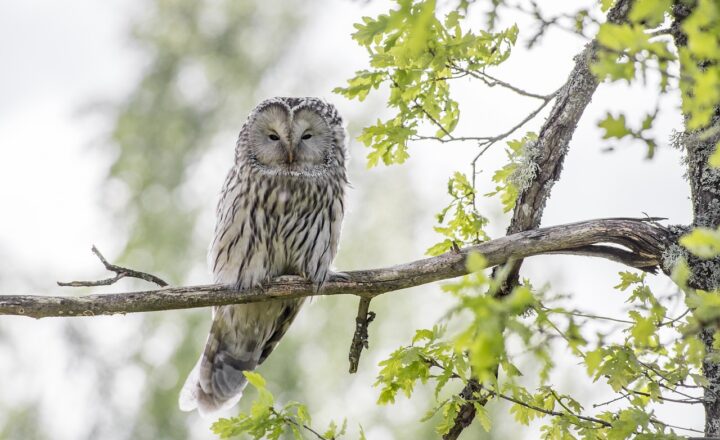The Role of Zoos in Studying Animal Behavior for Conservation Efforts
November 15, 2024

Zoos have long been a source of fascination and education for the public. However, their role extends far beyond entertainment; they serve as vital centers for research, particularly in understanding animal behavior. In an era where wildlife conservation is increasingly critical due to habitat loss, climate change, and human-wildlife conflict, the insights gained from zoos can help inform and enhance conservation efforts worldwide.
1. Understanding Animal Behavior: The Foundation of Conservation
Animal behavior, also referred to as ethology, is the study of how animals interact with their environment, other species, and each other. Understanding these behaviors is crucial for several reasons:
- Behavioral Adaptations: Animals have evolved various behaviors that increase their chances of survival and reproduction. Studying these adaptations in a controlled environment can provide insights into their natural habits and needs.
- Conservation Planning: Insights from behavioral studies help conservationists design effective strategies for preserving endangered species and managing wildlife reserves.
- Welfare Considerations: A thorough understanding of animal behavior can enhance the care provided in zoos, ensuring the physical and psychological well-being of the animals in captivity.
By observing behavior patterns, zoos contribute to conservation efforts by enabling scientists to gather data that may be difficult to obtain in the wild.
2. Zoos as Research Institutions
Zoos are increasingly becoming hubs for scientific research. Here’s how they facilitate behavioral studies:
- Controlled Environments: Zoos provide a safe environment where researchers can study animals without the threats of predators or habitat loss, allowing them to observe natural behaviors more clearly.
- Long-Term Studies: Some species may be difficult to study in the wild due to their elusive nature. Zoos offer an opportunity for long-term behavioral studies that help reveal trends over time.
- Collaboration with Universities: Many zoos partner with academic institutions to conduct research. These partnerships often lead to innovative studies that push the boundaries of animal behavior science.
As zoos continue to evolve as centers for animal research, their contributions to conservation become increasingly invaluable.
3. The Application of Behavioral Research in Conservation
The findings from studies conducted in zoos are not only academic; they have practical applications for conservation efforts:
3.1. Reintroduction Programs
In many cases, zoos play a crucial role in breeding programs for endangered species. By studying behavior, zoos can prepare these animals for a successful reintroduction into their natural habitats. This involves:
- Social Interactions: Understanding how animals interact is vital for reintroduction success. For instance, if a social species is released into the wild, it must be reintroduced with the appropriate social dynamics and relationships.
- Habitat Preferences: Research on how animals choose their habitats enables conservationists to create suitable environments for released animals, increasing their chances of survival.
3.2. Habitat Management
Behavioral studies inform how habitats can be managed to support native wildlife. For instance:
- Food Sources: Understanding dietary preferences helps in preserving or restoring essential food sources in the wild.
- Shelter Needs: Knowledge about nesting and shelter requirements aids in creating habitats that support breeding and long-term survival.
These applications contribute to a more informed approach to wildlife management and conservation.
4. Enhancing Animal Welfare Through Behavioral Studies
In addition to conservation, understanding animal behavior plays a critical role in enhancing animal welfare within zoos. Some key aspects include:
- Enrichment Programs: Knowledge of natural behaviors allows zoos to create enrichment programs that encourage animals to perform their natural behaviors, reducing stress and boredom.
- Stress Reduction Techniques: Research on animal stress responses can lead to techniques that minimize stress factors within the zoo environment, resulting in healthier and happier animals.
- Health Monitoring: Observing behavior helps in early detection of illness since changes in normal behavioral patterns often indicate health issues.
Through these initiatives, zoos not only contribute to scientific understanding but also become advocates for animal rights and welfare.
5. Case Studies of Successful Conservation Efforts
Several successful conservation stories highlight the role of zoos in animal behavior research:
5.1. The California Condor Recovery Program
The California condor, once on the brink of extinction, has seen a remarkable recovery due to collaborative efforts between zoos and conservationists. Behavioral studies helped inform:
- Breeding Techniques: Understanding mating behaviors and social hierarchies led to improved breeding success in captivity.
- Reintroduction Strategies: Insights into flight behaviors facilitated the monitoring and support of released birds, greatly enhancing survival rates.
5.2. The African Elephant Conservation Efforts
Elephants are known for their complex social structures and behaviors. Zoos have played an essential role in:
- Social Learning Studies: Research into how young elephants learn from their families informs rehabilitation techniques in the wild.
- Understanding Migration Patterns: Behavioral research has helped identify critical migration corridors that need protection.
These case studies exemplify how crucial behavioral research is to effective conservation strategies, unionizing the interests of both animals and human society.
Conclusion: A Partnership for the Future
In conclusion, the role of zoos in studying animal behavior is indispensable for conservation efforts. Through scientific research, these institutions not only improve our understanding of wildlife but also inform and enhance conservation strategies globally. As we move forward, collaborations between zoos, researchers, and conservation organizations will be vital in addressing the challenges faced by wildlife today. By prioritizing animal welfare alongside conservation goals, zoos can continue to serve as critical partners in the preservation of our planet’s rich biodiversity.
Together, we can pave the way for a sustainable future where both wildlife and humanity can thrive.








